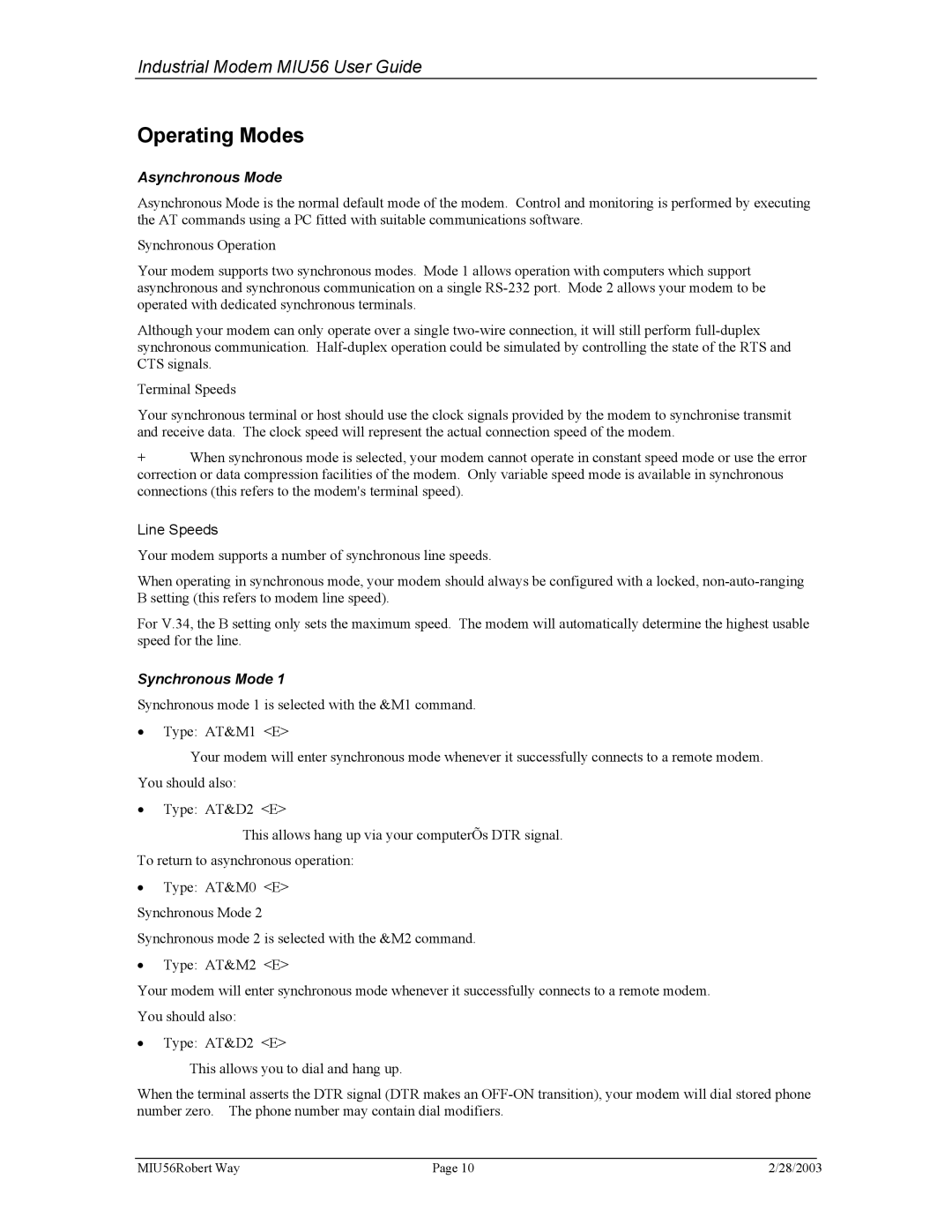
Industrial Modem MIU56 User Guide
Operating Modes
Asynchronous Mode
Asynchronous Mode is the normal default mode of the modem. Control and monitoring is performed by executing the AT commands using a PC fitted with suitable communications software.
Synchronous Operation
Your modem supports two synchronous modes. Mode 1 allows operation with computers which support asynchronous and synchronous communication on a single
Although your modem can only operate over a single
Terminal Speeds
Your synchronous terminal or host should use the clock signals provided by the modem to synchronise transmit and receive data. The clock speed will represent the actual connection speed of the modem.
+When synchronous mode is selected, your modem cannot operate in constant speed mode or use the error correction or data compression facilities of the modem. Only variable speed mode is available in synchronous connections (this refers to the modem's terminal speed).
Line Speeds
Your modem supports a number of synchronous line speeds.
When operating in synchronous mode, your modem should always be configured with a locked,
For V.34, the B setting only sets the maximum speed. The modem will automatically determine the highest usable speed for the line.
Synchronous Mode 1
Synchronous mode 1 is selected with the &M1 command.
•Type: AT&M1 <E>
Your modem will enter synchronous mode whenever it successfully connects to a remote modem. You should also:
•Type: AT&D2 <E>
This allows hang up via your computerÕs DTR signal.
To return to asynchronous operation:
•Type: AT&M0 <E> Synchronous Mode 2
Synchronous mode 2 is selected with the &M2 command.
•Type: AT&M2 <E>
Your modem will enter synchronous mode whenever it successfully connects to a remote modem. You should also:
•Type: AT&D2 <E>
This allows you to dial and hang up.
When the terminal asserts the DTR signal (DTR makes an
MIU56Robert Way | Page 10 | 2/28/2003 |
